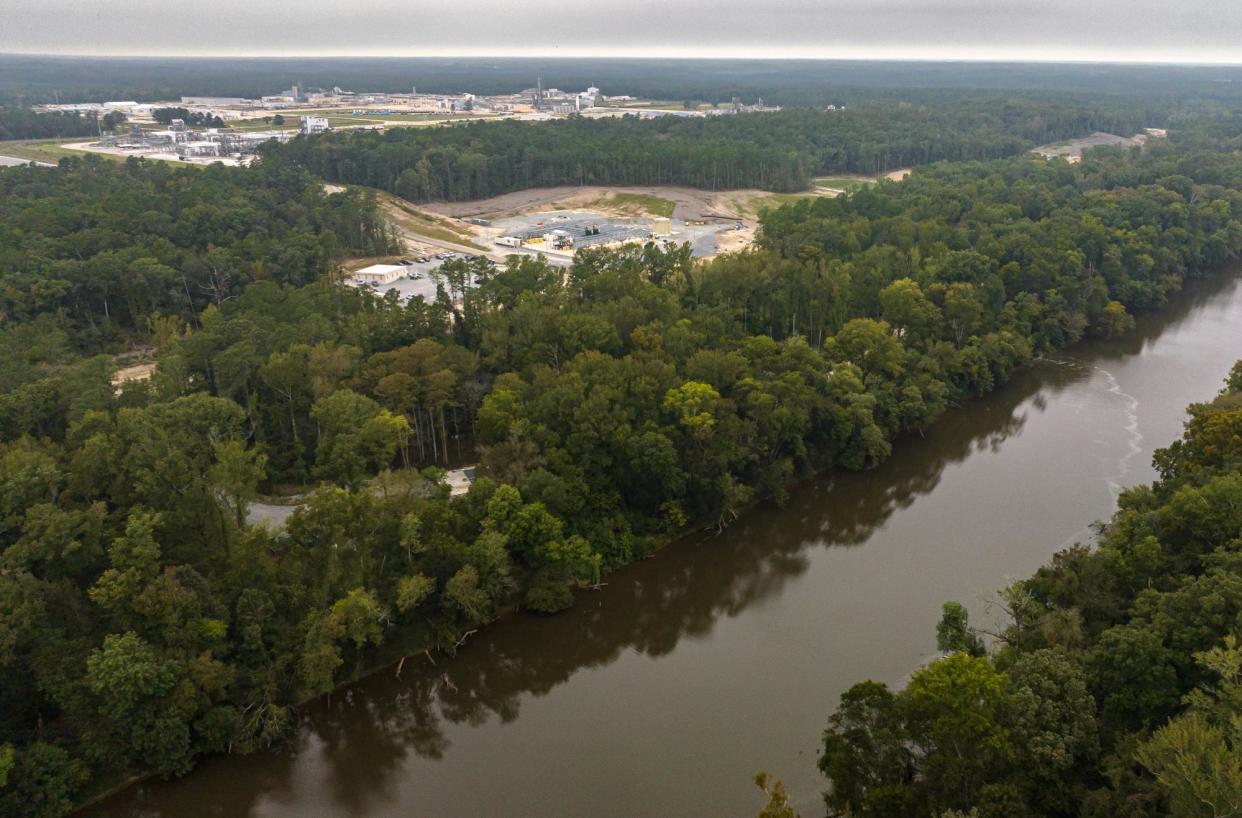Three US states call on environmental agency to regulate PFAS air emissions

Three US states are formally demanding that the Environmental Protection Agency (EPA) begin regulating PFAS “forever chemical” air emissions, as the toxic threat that the pollution poses to the environment and human health comes into sharper focus.
So far, federal regulators have focused on water pollution, but state environmental agencies in North Carolina, New Mexico and New Jersey last week filed a petition calling for the EPA to categorize four types of PFAS compounds as hazardous air pollutants and to begin regulating them under the Clean Air Act.
The petition comes after a Guardian investigation earlier this year found a Fayetteville, North Carolina, Chemours PFAS production plant is likely emitting much higher levels of the chemicals into the air than regulators and the company claimed. The air pollution is thought to be a driver of PFAS contamination in soil, water and food supplies across hundreds of square miles in the region.
Related: Kids using lotions have higher levels of hormone-disrupting toxins – study
However, a lack of federal rules makes it difficult for states to rein in air pollution, which is a “tremendous concern in our states and across the US”, the states wrote in their petition to Michael Regan, the EPA administrator.
“Adding these forever chemicals to the list of regulated pollutants addresses a gap in our regulatory authority and makes it possible to tackle a critical part of the PFAS life cycle: air emissions,” Elizabeth Biser, the secretary of the North Carolina department of environmental quality, added in a press release.
PFAS are a class of about 15,000 compounds most frequently used to make products water-, stain- and grease-resistant. They have been linked to cancer, birth defects, decreased immunity, high cholesterol, kidney disease and a range of other serious health problems. PFAS are dubbed “forever chemicals” because they do not naturally break down in the environment.
Air emissions are concerning because the chemicals are widely dispersed across the region. PFAS do not naturally break down once in the environment, so when it rains, the chemicals can contaminate soil, crops and drinking water supplies.
The petition states that North Carolina regulators have established a “causal link between significant air emissions of PFAS from the [Chemours plant]” and widespread contamination of private drinking water wells in a 27-sq-mile area around the plant, in which testing has identified Chemours-specific PFAS. Meanwhile another state found a similar problem across a 67-sq-mile area.
GenX, a PFAS produced at the Chemours plant, was detected in rainwater at high levels 90 miles away in Wilmington, North Carolina, which also suggests air pollution, said Emily Donovan, co-founder of the Clean Cape Fear non-profit, a residents group that advocates for stronger regulations around the Chemours plant.
The EPA this year enacted strong new drinking water limits for several PFAS compounds, but no laws exist that require Chemours to address its air pollution. Instead, a court in 2019 ordered Chemours to eliminate most of its air emissions, but no requirements are in place for other polluters.
The petition is “long overdue and a good first step”, Donovan said.
“At this point, the EPA should designate the entire class of PFAS as hazardous air pollutants,” she added.
The petitions call on the EPA to regulate PFOA, PFOS, PFNA and GenX, four of the most common PFAS compounds. Though thousands of the chemicals exist, technology that would be installed to remove the four chemicals would likely also remove many other PFAS.
The EPA has 18 months to respond to the petition, and the dangerous toxicological effects of the four chemicals in the petition are well established, said Bob Sussman, an attorney who has litigated against Chemours.
“It should not be hard to justify such a listing given the known adverse effects of PFOA, PFOS, GenX and other PFAS with extensive toxicity data,” he added.


